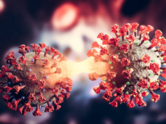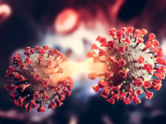Radiation exposure to kidney stones: Health hazards for Sunita Williams in space
TOI Lifestyle Desk | ETimes.in | Last updated on - Jul 4, 2024, 13:08 ISTShare fbsharetwsharepinshareComments (0)
01/7Health impacts on astronauts stuck in space

Sunita Williams and Barry Wilmore, initially on an eight-day mission, are experiencing an extended stay on the International Space Station (ISS) due to delays. The spacecraft, which launched on May 25, encountered a small helium leak, delaying its journey. It arrived at the ISS on June 6. Steve Stich, manager of NASA's Commercial Crew Program, stated, "NASA is taking our time and following our standard mission management team process."
02/7What is the concern here?


When astronauts take up missions to space, they go into an environment vastly different from Earth. Microgravity, radiation exposure, and the confined quarters of space stations introduce unique challenges to human health. Prolonged stays, such as the unexpected extension of Sunita Williams and Barry Wilmore's mission on the International Space Station (ISS), highlight the significant health risks astronauts face.
03/7Fluid redistribution and cardiovascular strain


One of the immediate changes astronauts experience in space is fluid redistribution. In the absence of gravity, bodily fluids shift towards the upper body, causing facial puffiness, nasal congestion, and a reduction in fluid volume in the legs. This can lead to decreased blood volume and alter blood pressure regulation. Consequently, upon returning to Earth, astronauts may suffer from orthostatic intolerance, which includes dizziness or fainting when standing up. But this happens to almost all of the astronauts who go into space.
04/7Muscle atrophy and bone loss


Microgravity has various effects on the musculoskeletal system. Astronauts experience rapid muscle atrophy, particularly in the legs and back, due to the lack of gravity requiring muscle support. This is compounded by significant bone loss, especially in weight-bearing bones like the spine and pelvis. The lack of mechanical stress leads to a decrease in bone density, similar to osteoporosis. Despite rigorous exercise routines on the ISS designed to combat these effects, some degree of bone loss remains inevitable.
Read also: Why are younger women getting more affected with breast cancer
05/7Increases the risk of kidney stones


The changes in fluid distribution also affect the urinary system, increasing the risk of kidney stones due to higher calcium levels in urine. Microgravity impacts metabolism, which alters how nutrients are absorbed and utilised by the body. Changes in hormone levels, insulin sensitivity, and the composition of gut microbiota have been observed, potentially influencing long-term health.
06/7Radiation exposure and long-term risks


Astronauts in space are exposed to higher levels of radiation compared to Earth. This radiation, which includes galactic cosmic rays and solar particle events, poses risks such as DNA damage and an increased likelihood of cancer. Space agencies carefully monitor and set limits on radiation exposure to ensure it remains within safe levels over the course of multiple missions.
07/7Sensory and neurological challenges


The lack of gravity affects sensory input, leading to disruptions in spatial orientation, balance, and eye-hand coordination. Many astronauts experience Space Motion Sickness (SMS) when they first arrive in space, which includes symptoms like nausea, vomiting, and disorientation. Although these symptoms typically subside as astronauts acclimate, the absence of gravity continues to affect neurological functions throughout their stay.



































































































closecomments
SIGN IN WITH
GoogleEmail